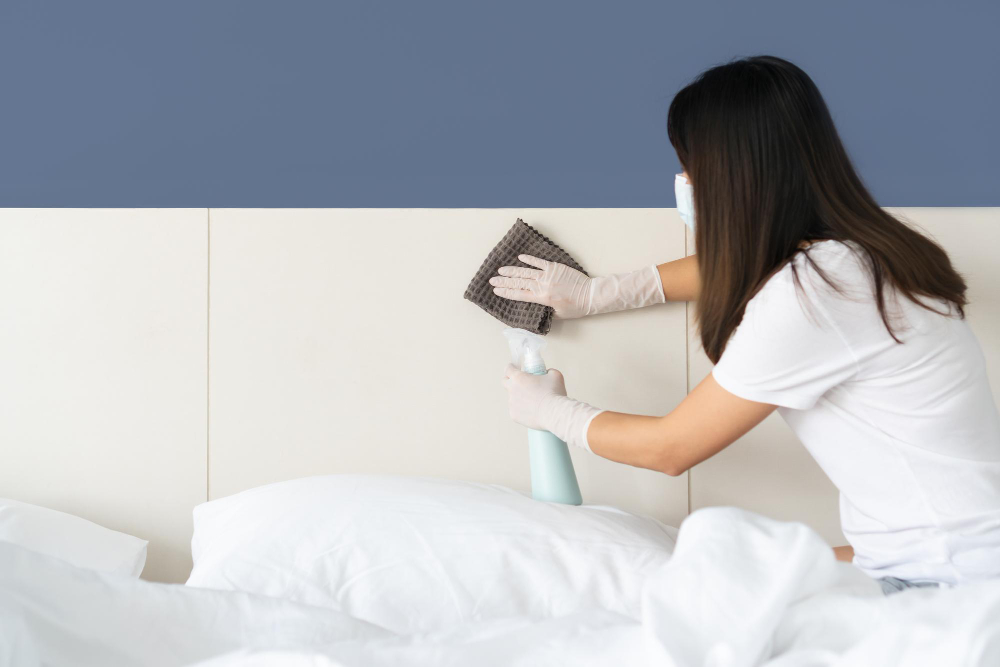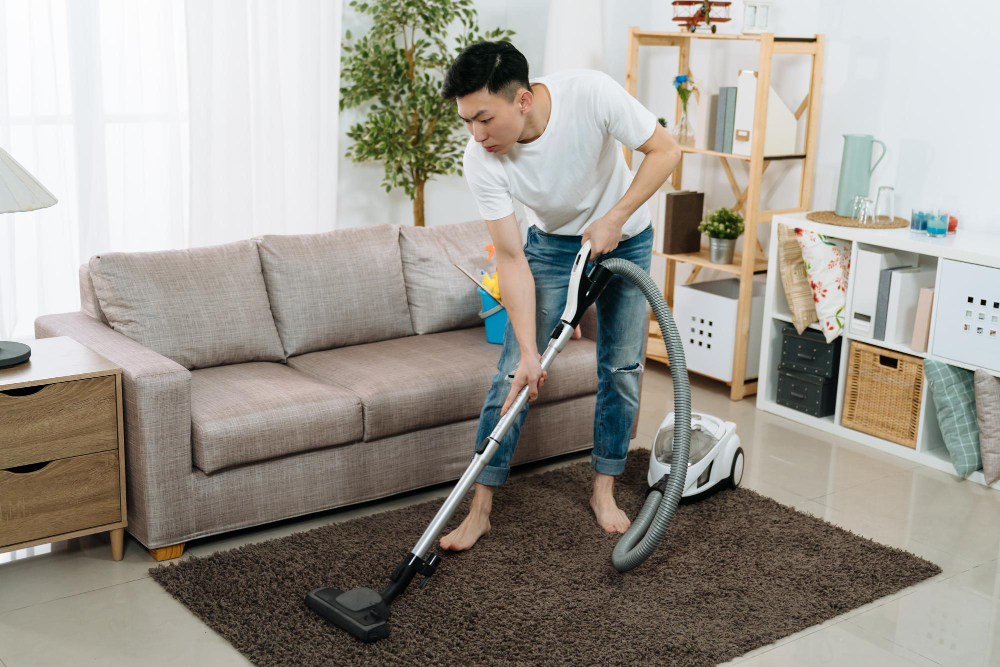How To Overcome Mold and Mildew Issues in Your House

Mold and mildew are problems that affect millions of homes every year. They can make your house look dirty, smell bad and cause health issues in people that live there.
Mold is easy to spot because it’s green or black and often looks fuzzy or slimy; however, you may not always be able to see mildew because it’s white or grayish-white in color. Both of these common household problems are caused by moisture, which can get into your home through leaky pipes, windows, or doors that don’t seal properly against weather changes—or even from normal everyday activities like cooking dinner on the stovetop.
Once mold starts growing inside a building structure such as drywall panels or ceiling tiles, it can spread quickly throughout the house unless you take steps to remove it right away.
Why We Need to Deal with Mold Growth and Mildew Problems
Mold does not have to be black to be bad for you. There are many different types of mold, but all types of mold will produce spores when they grow. These spores can cause allergic reactions in humans and pets that are exposed to them.
Mold can also create an unhealthy indoor environment by causing respiratory problems like asthma attacks and allergies. Mold can also irritate the eyes and skin of anyone who comes into contact with it.
If you have mold and mildew growing in your home there is no time to waste before dealing with it properly. You should deal with this problem right away because if you don’t, it could get worse very quickly leaving you with no choice but to call a professional mold removal company to deal with this issue for you as soon as possible.
Identify the source of the problem such as a damp basement
Identifying the source of your mold and mildew issues is the first step to solving them. The next step will depend on what you find, but these are common sources:
- Water leaks from plumbing, appliances, or pipes can cause mold and mildew problems. Check for water damage on walls or floors that may be caused by leaks or flooding.
- Moisture in the unused spaces can lead to mold growth as well as insect infestations (especially termites), which both require professional removal services when found in large amounts. Remember that basements are usually not heated during cold months and should be kept dry to prevent any moisture buildup.
Be sure there isn’t excessive moisture buildup in the basement due to rainwater runoff on roofs and gutters—if it gets too wet up there, it could start raining inside your home.
Similarly, check for excessive humidity levels throughout your house if you live near bodies of water (like oceans), especially since this can also cause structural damage over time when combined with water damage from other sources such as rainstorms or floods outside nearby rivers/streams, etc.
Pinpoint the mold spores problem areas in the house
Another way in combating a mold or mildew problem is to identify the areas in which it occurs. Mold grows best in dark, damp places that stay wet for long periods of time.
Mold and mildew spores are common problems in many houses due to their high water content, as well as their ease of reproduction. Many people let water sit on surfaces like bathroom floors or counters without wiping it up immediately; over time this can lead to mold growth and other health issues if not addressed properly.

Prevent mold growth with anti-fungal products.
The process of preventing mold is simple, but it can be time-consuming. Put on your gloves and safety glasses and mix the bleach solution in a plastic bucket.
Use warm water and add 1 cup of bleach to every gallon of water (for example: if you want to mix up 10 gallons of cleaning solution, use 10 cups of bleach).
Soak your surface mold area until the mold is gone. Do not scrub too hard or use chemicals such as bleach on wood surfaces such as doors or cabinets; this could cause further damage to paint or other finishes. You can also try mold inhibitors with organic materials sold in the market.
Sanitize and clean your home regularly
Your home should be thoroughly cleaned and sanitized regularly. The best way to do this is by using a disinfectant, such as bleach solution or vinegar solution, along with an anti-fungal spray. Also, try hydrogen peroxide solution or mold-killing cleaner.
The vinegar solution can be made by mixing one part water with two parts white vinegar in a spray bottle and spraying it on the infected area. Let it sit for 30 minutes before wiping the surface dry with a towel (or paper towel). Repeat if necessary until all of the molds are gone from that surface in your home space.
If you don’t want to use vinegar because of its smell or any other reason, you may consider using hydrogen peroxide instead which has similar antifungal properties but no odor at all. You will still want to let this sit on top of overnight before wiping clean though so make sure there’s nothing else nearby when doing so since it’ll bubble up quite noticeably once applied.
Use a dehumidifier to keep your home dry.
You can also try using a dehumidifier to remove the moisture from your home. These units have fans that suck up water from the air and then transfer it outside of your house. Dehumidifiers are especially useful in basements, which tend to be damp places where mold thrives and spreads easily.
One way to test whether or not you need a dehumidifier is by placing a damp cloth or paper towel on top of an electric outlet for several days. If there’s a white stain on the towel when you uncover it, chances are high that mold has been growing behind your walls or under floorboards. A dehumidifier is guaranteed to help with excess moisture issues.
Clean your AC’s drain pan and filter regularly.
With the right filters and maintenance, you can go a long way toward preventing mildew in your home. Every month or so, take the time to clean out the drain pan and filter. This will help keep it from getting clogged up with dirt and grime that can cause mold to grow.
While cleaning the filter is pretty straightforward—you just need to wipe it down with soapy water—you may find it helpful to refer back to our guide on how to clean an air conditioner filter before doing so. The process for cleaning out your drain pan is similar but involves submerging it somewhere deep enough for water to flow freely through as well as letting everything dry out afterward (if necessary).
Cover or remove carpets from damp areas of your home.
Carpets are a great way to make your house homier, but they can also be a source of mold and mildew. When carpets become damp due to leaks or high humidity levels, the spores that cause these issues thrive in the damp environment.
The best way to prevent this is by covering your carpet with either plastic sheeting or moving it to an area where it won’t be exposed to high moisture levels. If you’re not able to move them, consider using dehumidifiers in combination with fans and sunlight for drying purposes.

Use proper ventilation in your bathroom
A properly ventilated bathroom is an important part of keeping the air quality high. If you don’t have a window for ventilation, use a fan that vents to the outside. If there’s no way for it to vent outside, then consider venting into your attic instead. Fresh air and indoor plants are also good alternatives. Make sure that you also take time to wash or replace shower curtains.
The same goes for using fans that vent into crawlspaces as well as basements. In all cases, make sure you have some sort of insulation around the outside wall so water from rain or condensation doesn’t cause mold problems in addition to hurting your home’s energy efficiency.
Prevent mold and mildew growth before it gets worse
If youve been having problems with mold and mildew in your house, its possible to get rid of them if you know where the problem areas are and what you can do about them.
Mold and mildew are serious health hazards that can cause people to have allergic reactions, asthma attacks, or even infections such as pneumonia. If you have mold or mildew growing in your home, it`s important that you try to remove it so that these issues don’t occur.
Mold grows on wet surfaces like walls and ceilings while mildew grows on dry surfaces such as paints and wallpaper. They both produce spores that float into the air causing respiratory problems for some people.
Mold and mildew are serious problems that can affect your health and the health of your family. But they don’t have to be! By taking the proper precautions and tackling mold with anti-fungal products, you can get rid of this problem once and for all.




